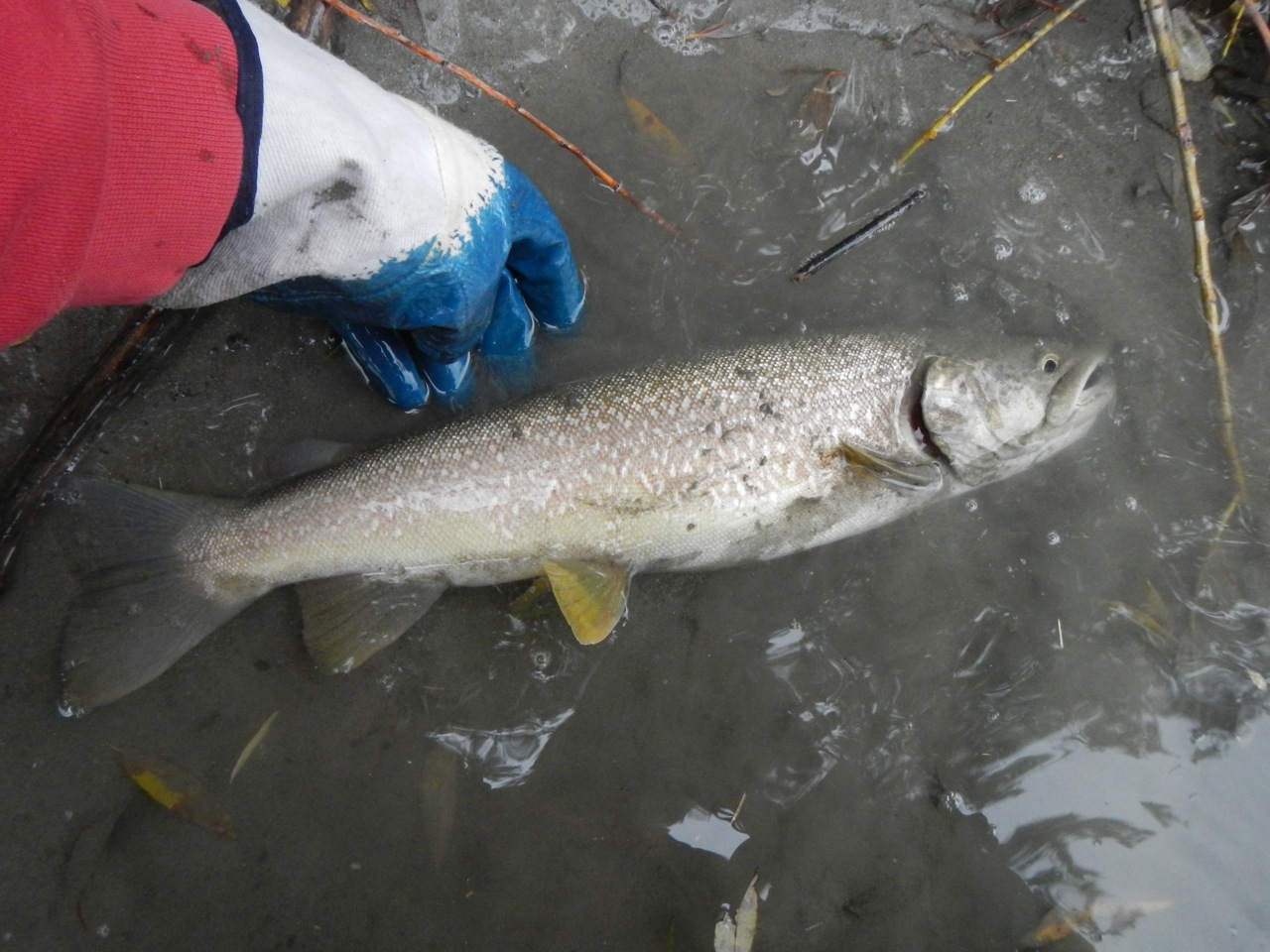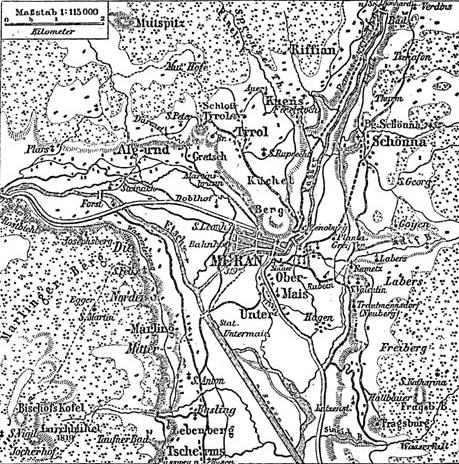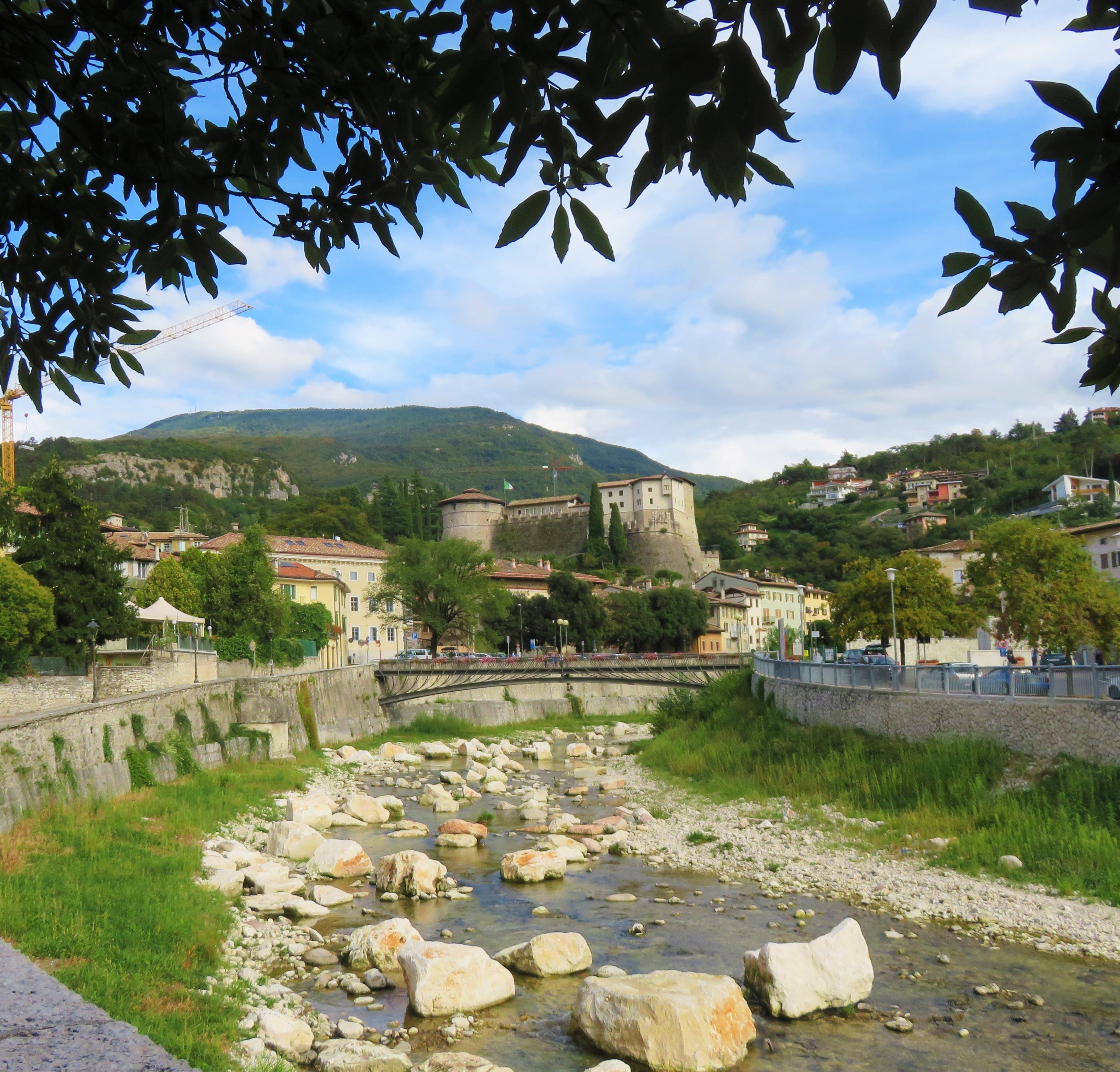|
Adige Valley
The Adige (; german: Etsch ; vec, Àdexe ; rm, Adisch ; lld, Adesc; la, Athesis; grc, Ἄθεσις, Áthesis, or , ''Átagis'') is the second-longest river in Italy, after the Po. It rises near the Reschen Pass in the Vinschgau in the province of South Tyrol, near the Italian border with Austria and Switzerland, and flows through most of northeastern Italy to the Adriatic Sea. The river's name is Celtic in origin, from the Proto-Celtic cel-x-proto, *yt-ese, label=none, "the water", cognate with the River Tees in England (anciently ''Athesis'', ''Teesa''). Description The river source is near the Reschen Pass () close to the borders with Austria and Switzerland above the Inn valley. It flows through the artificial alpine Lake Reschen. The lake is known for the church tower that marks the site of the former village of Alt Graun ("Old Graun"); it was evacuated and flooded in 1953 after the dam was finished. Near Glurns, the Rom river joins from the Swiss Val Müstair. ... [...More Info...] [...Related Items...] OR: [Wikipedia] [Google] [Baidu] |
Verona
Verona ( , ; vec, Verona or ) is a city on the Adige River in Veneto, Northern Italy, Italy, with 258,031 inhabitants. It is one of the seven provincial capitals of the region. It is the largest city Comune, municipality in the region and the second largest in northeastern Italy. The metropolitan area of Verona covers an area of and has a population of 714,310 inhabitants. It is one of the main tourist destinations in northern Italy because of its artistic heritage and several annual fairs and shows as well as the Opera, opera season in the Verona Arena, Arena, an ancient Ancient Rome, Roman Amphitheatre, amphitheater. Between the 13th and 14th century the city was ruled by the Scaliger, della Scala Family. Under the rule of the family, in particular of Cangrande I della Scala, the city experienced great prosperity, becoming rich and powerful and being surrounded by new walls. The Della Scala era is survived in numerous monuments around Verona. Two of William Shakespeare's ... [...More Info...] [...Related Items...] OR: [Wikipedia] [Google] [Baidu] |
Merano
Merano (, , ) or Meran () is a city and ''comune'' in South Tyrol, northern Italy. Generally best known for its spa resorts, it is located within a basin, surrounded by mountains standing up to above sea level, at the entrance to the Passeier Valley and the Vinschgau. In the past, the city has been a popular place of residence for several scientists, literary people, and artists, including Franz Kafka, Ezra Pound, Paul Lazarsfeld, and also Empress Elisabeth of Austria, who appreciated its mild climate. Name Both the Italian () and the German () names for the city are used in English. The Ladin form of the name is . The official name of the municipality (''comune'') is ''Comune di Merano'' in Italian and ''Stadtgemeinde Meran'' in German (both are in official use). History In 17th-century Latin, the city was called ''Meranum''. Other archaic names are ''Mairania'' (from 857 AD) and ''an der Meran'' (from the 15th century). Origin The area has been inhabited since the third ... [...More Info...] [...Related Items...] OR: [Wikipedia] [Google] [Baidu] |
Rovereto
Rovereto (; "wood of sessile oaks"; locally: ''Roveredo'') is a city and ''comune'' in Trentino in northern Italy, located in the Vallagarina valley of the Adige River. History Rovereto was an ancient fortress town standing at the frontier between the bishopric of Trento – an independent state until 1797 – and the republic of Venice, and later between Austrian Tyrol and Italy. In the Middle Ages it was known by its German toponyms ''Rofreit'' and ''Rovereith''. This town started to be populated with inhabitants of the prehistory with traces that were found where today are the oldest ways which belong to the actual main historical centre, around via della Terra. The town has a complexity of plans which are printed in various developments, as if it could have different directions to evolve an ideal, brought towards its completeness in the 15th century, from the model of Siena – the leaf of the crown and the classic Athens reference of the foxil Nautilus. Some of the trace ... [...More Info...] [...Related Items...] OR: [Wikipedia] [Google] [Baidu] |
Veneto
Veneto (, ; vec, Vèneto ) or Venetia is one of the 20 regions of Italy. Its population is about five million, ranking fourth in Italy. The region's capital is Venice while the biggest city is Verona. Veneto was part of the Roman Empire until the 5th century AD. Later, after a Feudalism, feudal period, it was part of the Republic of Venice until 1797. Venice ruled for centuries over one of the largest and richest maritime republics and trade empires in the world. After the Napoleonic Wars and the Congress of Vienna, the Republic was combined with Lombardy and annexed to the Austrian Empire as the Kingdom of Lombardy–Venetia, until that was Italian unification, merged with the Kingdom of Italy in 1866, as a result of the Third Italian War of Independence. Besides Italian language, Italian, most inhabitants also speak Venetian language, Venetian. Since 1971, the Statute of Veneto has referred to the region's citizens as "the Venetian people". Article 1 defines Veneto as an " ... [...More Info...] [...Related Items...] OR: [Wikipedia] [Google] [Baidu] |
Trentino
Trentino ( lld, Trentin), officially the Autonomous Province of Trento, is an autonomous province of Italy, in the country's far north. The Trentino and South Tyrol constitute the region of Trentino-Alto Adige/Südtirol, an autonomous region under the constitution. The province is composed of 166 ''comuni'' (municipalities). Its capital is the city of Trento (Trent). The province covers an area of more than , with a total population of 541,098 in 2019. Trentino is renowned for its mountains, such as the Dolomites, which are part of the Alps. Etymology The province is generally known as "Trentino". The name derives from Trento, the capital city of the province. Originally, the term was used by the local population only to refer to the city and its immediate surroundings. Under former Austrian rule, which began in the 19th century (previously, Trentino was governed by the local bishop), the common German name for the region was ''Welschtirol'' () or ''Welschsüdtirol'' (‘It ... [...More Info...] [...Related Items...] OR: [Wikipedia] [Google] [Baidu] |
Avisio
The Avisio is an Italian stream (a '' torrente''), a left tributary of the Adige, whose course is in Trentino. It rises from Marmolada and runs through the Fascia Valley, the Fiemme Valley and the Cembra Valley before joining the Adige in the town of Lavis, a small town north of Trento Trento ( or ; Ladin and lmo, Trent; german: Trient ; cim, Tria; , ), also anglicized as Trent, is a city on the Adige River in Trentino-Alto Adige/Südtirol in Italy. It is the capital of the autonomous province of Trento. In the 16th centu .... References External links * Rivers of Trentino Rivers of Italy {{Italy-river-stub ... [...More Info...] [...Related Items...] OR: [Wikipedia] [Google] [Baidu] |
Trento
Trento ( or ; Ladin and lmo, Trent; german: Trient ; cim, Tria; , ), also anglicized as Trent, is a city on the Adige River in Trentino-Alto Adige/Südtirol in Italy. It is the capital of the autonomous province of Trento. In the 16th century, the city was the location of the Council of Trent. Formerly part of Austria and Austria-Hungary, it was annexed by Italy in 1919. With 118,142 inhabitants, Trento is the third largest city in the Alps and second largest in the historical region of Tyrol. Trento is an educational, scientific, financial and political centre in Trentino-Alto Adige/Südtirol, in Tyrol and Northern Italy in general. The city contains a picturesque Medieval and Renaissance historic centre, with ancient buildings such as Trento Cathedral and the Castello del Buonconsiglio. Together with other Alpine towns Trento engages in the Alpine Town of the Year Association for the implementation of the Alpine Convention to achieve sustainable development in the Alpin ... [...More Info...] [...Related Items...] OR: [Wikipedia] [Google] [Baidu] |
Sprachraum
In linguistics, a sprachraum (; , "language area", plural sprachräume) is a geographical region where a common first language (mother tongue), with dialect varieties, or group of languages is spoken. Characteristics Many sprachräume are separated by national borders, whilst others are separated by oceans or ethnolinguistic boundaries. The five major Western sprachräume (by number of speakers) are those of English, Spanish, French, Portuguese, and German. The English sprachraum (Anglosphere) spans the globe, from the United Kingdom, Ireland, United States, Canada, Australia, and New Zealand to the many former British and American colonies where English has official language status alongside local languages, such as India, South Africa, and the Philippines. The Spanish sprachraum, known as the Hispanosphere, originated in the Iberian Peninsula but today most Spanish speakers are in Hispanic America; of all countries with a majority of Spanish speakers, only Spain and Equator ... [...More Info...] [...Related Items...] OR: [Wikipedia] [Google] [Baidu] |
Deutschlandlied
The "" (; "Song of Germany"), officially titled "" (; "The Song of the Germans"), has been the national anthem of Germany either wholly or in part since 1922, except for a seven-year gap following World War II in West Germany. In East Germany, the national anthem was "Auferstanden aus Ruinen" ("Risen from Ruins") between 1949 and 1990. After World War II and the fall of Nazi Germany, only the third stanza has been used as the national anthem. Its incipit "" ("Unity and Justice and Freedom") is considered the unofficial national motto of Germany, and is inscribed on modern German Army belt buckles and the rims of some German coins. The music is the hymn "Gott erhalte Franz den Kaiser", written in 1797 by the Austrian composer Joseph Haydn as an anthem for the birthday of Francis II, Emperor of the Holy Roman Empire and later of Austria. In 1841, the German linguist and poet August Heinrich Hoffmann von Fallersleben wrote the lyrics of "" as a new text for that music, counte ... [...More Info...] [...Related Items...] OR: [Wikipedia] [Google] [Baidu] |
Salorno
Salorno sulla Strada del Vino (; german: Salurn ) is the southernmost ''comune'' (municipality) in South Tyrol in northern Italy, located about southwest of the city of Bolzano. It is one of only five mainly Italian-speaking municipalities in South Tyrol. Geography The village centre is located on a scree in the Adige (''Etsch'') valley, about northeast of the city of Trento and about southwest of Bolzano. Parts of the municipal area belong to the Trudner Horn Nature Park nature reserve, which is part of the Natura 2000 network. Salorno station is a stop on the Brenner Railway line from Innsbruck to Verona. In the northwest Salorno borders the South Tyrolean municipalities of Kurtinig, Margreid, Montan, and Neumarkt. In the east and south it borders the Trentino municipalities of Altavalle, Capriana, Cembra Lisignago, Giovo, Grauno, Grumes, Mezzocorona, Roverè della Luna and Valda. The ''Chiusa di Salorno'' (''Salurner Klause''), a narrow section of the Adige Valley ... [...More Info...] [...Related Items...] OR: [Wikipedia] [Google] [Baidu] |
Brenner Pass
The Brenner Pass (german: link=no, Brennerpass , shortly ; it, Passo del Brennero ) is a mountain pass through the Alps which forms the border between Italy and Austria. It is one of the principal passes of the Eastern Alpine range and has the lowest altitude among Alpine passes of the area. Dairy cattle graze in alpine pastures throughout the summer in valleys beneath the pass and on the mountains above it. At lower altitudes, farmers log pine trees, plant crops and harvest hay for winter fodder. Many of the high pastures are at an altitude of over ; a small number stand high in the mountains at around . The central section of the Brenner Pass covers a four-lane motorway and railway tracks connecting Bozen/Bolzano in the south and Innsbruck to the north. The village of Brenner consists of an outlet shopping centre (supermarkets and stores), fruit stores, restaurants, cafés, hotels and a gas station. It has a population of 400 to 600 (). Etymology Older, obsolete theo ... [...More Info...] [...Related Items...] OR: [Wikipedia] [Google] [Baidu] |
Eisack
The Eisack (german: Eisack, ; it, Isarco ; Latin: ''Isarus'' or ''Isarcus'') is a river in Northern Italy, the second largest river in South Tyrol. Its source is near the Brenner Pass, at an altitude of about 1990 m above sea level. The river draws water from an area of about 4,200 km². After about 96 km, it joins the Adige river south of Bolzano. At first the river flows through the Wipptal and after the village of Vahrn through the Eisacktal. Its source is sung of in the ''Bozner Bergsteigerlied'' as the northern frontier of the South Tyrolean homeland. The major towns and villages along the course of the river are Sterzing, Franzensfeste, Brixen, Klausen, Waidbruck and finally the capital city of the province. In Brixen it merges with the Rienz. Several smaller creeks are tributaries, including the Ridnauner Bach, the Pflerscher Bach, the Pfitscher Bach, the Villnößer Bach, the Derjon, the Braibach (also known as Tierser Bach), the Eggentaler Bach and the Talfer ... [...More Info...] [...Related Items...] OR: [Wikipedia] [Google] [Baidu] |






.jpg)

